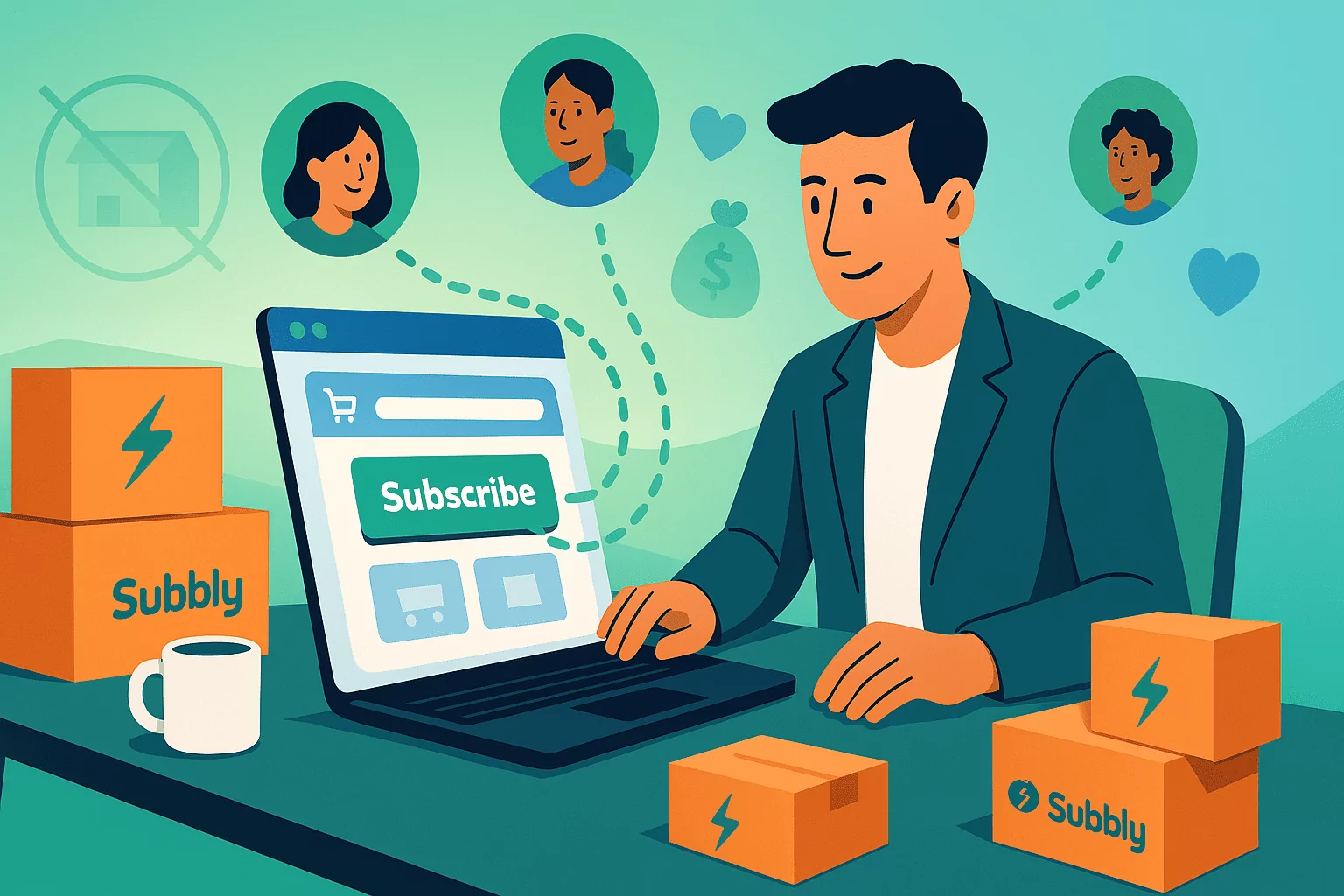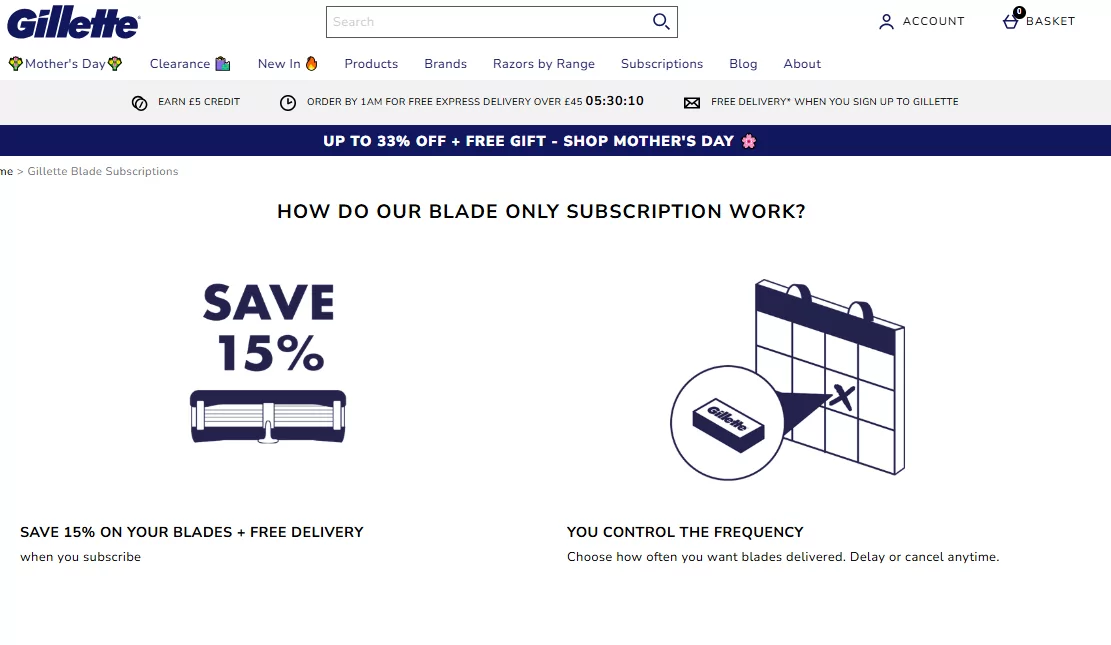What Is A DTC Subscription Model?
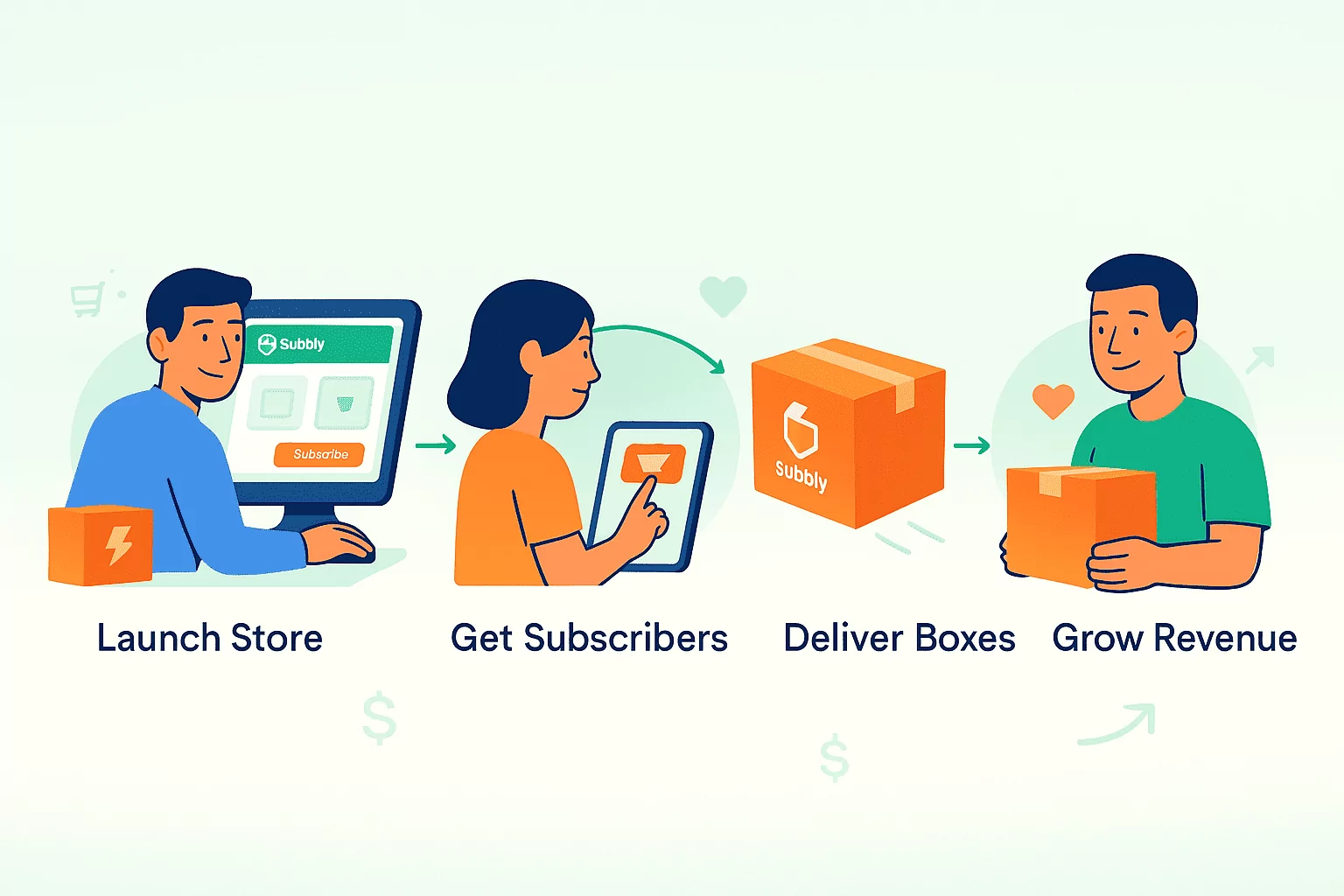
A DTC subscription business combines two powerful concepts: direct-to-consumer (DTC) selling and subscriptions. Let’s explore why this is so effective.
What does direct-to-consumer (DTC) mean?
DTC means selling straight to your customers without relying on retailers or wholesalers. Instead, you control everything from pricing, branding, marketing, and customer relationships to fulfillment.
Businesses are shifting to DTC because they can enjoy higher profits, since no middlemen are taking a cut. It also allows them to build a stronger brand identity because they own the customer experience from start to finish.
Finally, the DTC business model enables businesses to build closer relationships with their customers, allowing them to collect more and better-quality customer data. This can be used to identify their preferences and use them to inform marketing campaigns.
What is a subscription business?
A subscription model means customers pay regularly, whether that’s weekly, monthly, or yearly, to receive a product or service. Instead of relying on one-time sales, your revenue becomes recurring, predictable, and consistent.
Here are the business benefits of using a subscription model:
- Steady income: Regular billing creates more stable monthly recurring revenue (MRR) and annual recurring revenue (ARR). This makes it easier to project your business growth and finances. It also means you are less reliant on new sales.
- Customer loyalty: Subscriptions encourage long-term relationships.
- Convenience sells: Customers love set-and-forget purchases that save them time.
Combining the DTC and subscription models gives you the best of both worlds:
- You sell directly to customers, so you own the relationship.
- You offer recurring subscriptions, meaning you get steady revenue.
Instead of hoping customers return, you create a long-term connection that keeps them engaged.
How Gillette expanded into DTC subscriptionsGillette, traditionally a supermarket staple, has shifted towards a direct-to-consumer (DTC) subscription model to compete with emerging razor subscription brands like Dollar Shave Club and Harry’s. Through Gillette’s subscription service, customers can receive razor blade refills delivered at regular intervals, eliminating the need to repurchase in stores.
This model allows Gillette to retain customer loyalty, offer better pricing incentives, and collect valuable consumer data. By combining the convenience of eCommerce with a subscription-first approach, Gillette has adapted to modern consumer shopping habits while maintaining its strong market presence. |
5 Best Practices for Launching and Scaling A DTC Subscription Business
A successful DTC subscription offering isn’t just about having a great product. You need the right strategies to build a profitable, sustainable business.
Here are five best practices for helping DTC businesses launch and grow their subscriptions.
1. Revisit your value proposition
You must clearly understand why someone should subscribe to your product rather than buy it from a shop. The best subscription businesses solve customer problems, offer them convenience, or create excitement.
Ways to offer value include:
- Exclusive access: Offer members-only perks, early product releases, or VIP experiences.
- Convenience: Save customers time or effort (e.g., automatic refills, curated product selections).
- Cost savings: Make the subscription feel like a better deal than one-time purchases.
Check out this Harvard Business Review guide to learn more about creating a value proposition.
Example: Who Gives A Crap
Who Gives A Crap sells toilet paper on subscription. Its value proposition focuses on sustainability and social impact. It boasts 100% recycled or bamboo toilet paper and plastic-free packaging. 50% of its profits go to building toilets in developing countries.
This gives eco-conscious customers a reason to continue subscribing instead of buying from a supermarket.
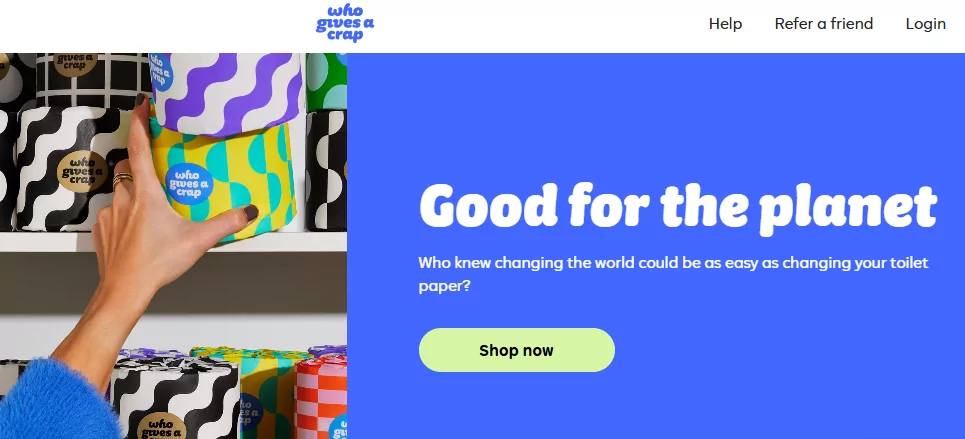
2. Optimize your pricing strategy
Offering the right combination of subscription tiers and pricing will help attract potential customers and ensure your business is profitable.
Things to test:
- Different subscription tiers: Offer basic, premium, and VIP options to cater to different budgets.
- Monthly vs. annual billing: Encourage longer commitments with discounts on annual plans.
- Trial periods: A free or low-cost trial can help convert hesitant customers.
Example: Blue Apron
Blue Apron offers a meal kit subscription service with pricing that varies based on the number of recipes and servings selected:
- Two-serving signature plan: Subscribers choose 2, 3, or 4 recipes per week, with prices decreasing as more recipes are added. For instance, 2 recipes per week cost $11.99 per serving, while 4 recipes per week reduce the cost to $9.99 per serving.
- Four-serving signature plan: Designed for families, this plan offers 2, 3, or 4 recipes per week, with per-serving prices decreasing as more recipes are selected.
This dynamic pricing strategy allows customers to tailor their subscriptions to their needs and budgets, increasing satisfaction and retention.
3. Focus on retention, not just acquisition
Churn is a significant challenge for subscription businesses, so you need strategies to keep customers engaged.
We’ll go into more detail on churn later in this guide. For now, know that you can improve retention by:
- Sending personalized emails: Recommend products based on past purchases.
- Offering skip/pause options: Let customers adjust their subscriptions instead of canceling.
- Creating a loyalty program: Reward long-term subscribers with discounts or bonuses.
Learn more about how to boost customer retention by checking out our guides:
- Subscription box subscriber retention strategies: An introduction
- Understanding and improving your customer retention rate
Example: BarkBox provides dog treats and toys on a subscription basis. When customers pass loyalty milestones, they are sent an extra special gift. This makes customers feel valued and less likely to cancel.

4. Build a community around your brand
People love to feel part of something, so creating an engaged community around your brand helps build loyalty.
Ways to do this:
- Encourage user-generated content: Have subscribers share photos and reviews.
- Engage on social media: Run polls, giveaways, or exclusive Q&As.
- Offer subscriber-only perks: Think early access to new products or live events.
This article from Aventi Group provides some additional tips for building online communities.
Example: Peloton
Fitness training and equipment hire business, Peloton built an entire online fitness community, making customers feel like they’re part of a movement, not just buying a product.
Some of the ways it did this include:
- Live and on-demand classes with interactive elements.
- Instructors engage with the audience, often addressing users by name during live classes.
- Encouraging members to discuss workouts, share progress, and provide peer support on unofficial social media groups.
- Monthly challenges, milestone badges, and achievement tracking, encouraging long-term participation.
- Peloton introduced public teams, allowing users to join groups of up to 50,000 people, collaborate on fitness goals, and track progress collectively.
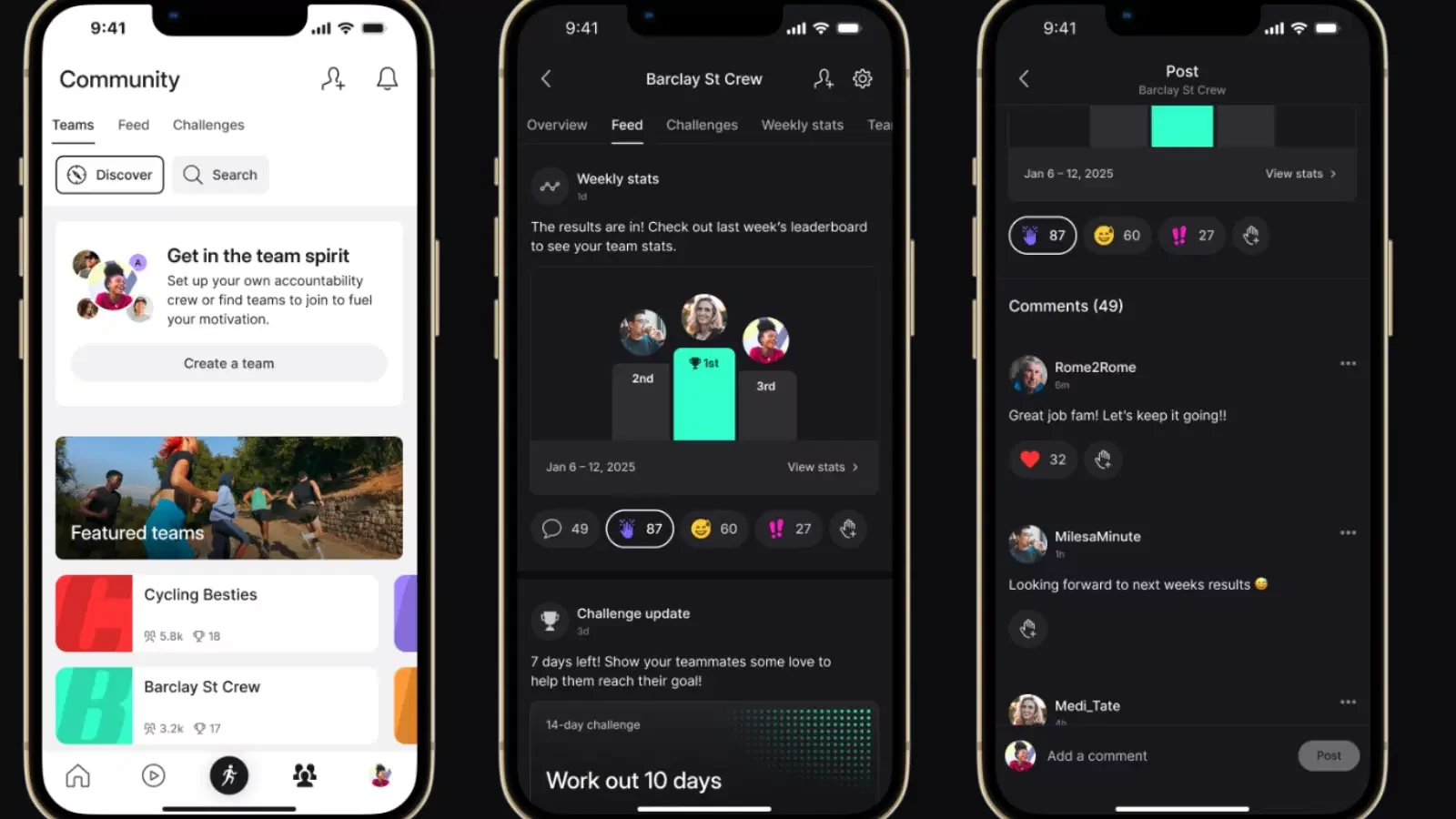
5. Automate as much as possible
As your business grows, you’ll likely have more processes to manage. However, scaling a subscription business is much easier with the right tools. Automation reduces manual work and ensures a smooth customer experience.
Business systems that we recommend automating include:
- Recurring billing: Make sure payments are processed smoothly.
- Email sequences: Welcome new customers, re-engage inactive ones, and win back cancellations.
- Fulfillment and shipping: Use third-party logistics (3PL) partners or automation tools for inventory management.
It’s important not to remove the human element from your business altogether. For example, you might choose to automate your customer service. This is great for answering common questions or dealing with simple issues.
However, if a customer’s problem is more nuanced and they want to speak to a human, then you should provide them with the option to do so.
Example: Subbly
Subbly is designed specifically for subscription businesses, offering built-in automation tools that reduce friction and improve efficiency.
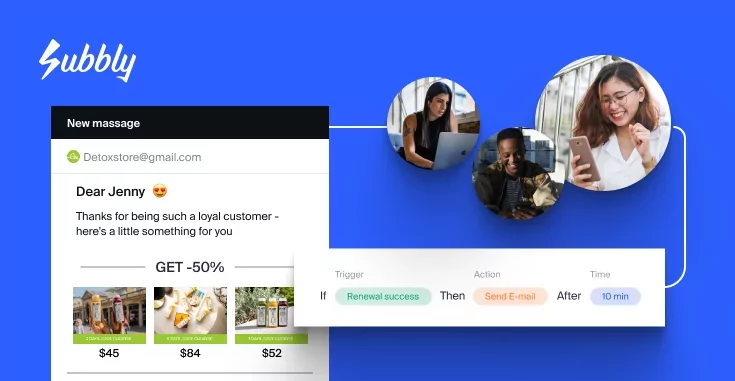
It includes useful DTC subscription features, including:
- Automated billing and dunning management: Handles recurring payments, retries failed charges, and sends automated reminders to reduce churn.
- Custom workflows: Create automated rules for things like trial expirations, customer segmentation, and plan upgrades.
- Subscriber portal: Customers can update their plans, pause subscriptions, or skip a shipment, without manual intervention.
- Order management and fulfillment syncing: Integrates with fulfillment services to streamline logistics.
Using a subscription-first platform like Subbly means less time spent on admin tasks and more time focusing on growth.
DTC Subscription Business Model Challenges
Moving to a DTC subscription model has massive benefits but is not without challenges.
Whether you’re an entrepreneur starting fresh or an established business shifting away from retailers, this section lists some common hurdles to watch out for.
These challenges seem overwhelming, but the key is being proactive by thinking about marketing, retention, fulfillment, and technology before you launch rather than fixing problems as they come up.
Getting customers without relying on retailers
When you sell through an intermediary like a supermarket, they handle marketing, foot traffic, and discovery. In a DTC model, you need to attract customers yourself.
Not only this, but you’ll also be competing against the big-brand intermediaries you recently shunned.
This means you must either handle all of your D2C marketing yourself or hire someone to manage your campaigns for you.
Managing churn and keeping subscribers engaged
As mentioned earlier, retention is key for DTC subscription businesses. But many companies underestimate churn and focus too much on signing up new subscribers instead of keeping the ones they have.
Customers usually cancel when they don’t see enough value in their subscriptions. Billing issues, shipping delays, or bad customer support can all lead to drop-offs, while a lack of engagement from DTC brands can cause customers to forget about their subscriptions.
We recently published a report on the churn rates experienced by the thousands of subscription businesses using our platform in 2024.
The good news is that our research revealed that DTC replenishment services usually outperform other subscription models in terms of customer retention.
D2C replenishment had lower churn rates in the bottom and median quartiles compared to subscription boxes, although the top quartile had slightly higher rates.
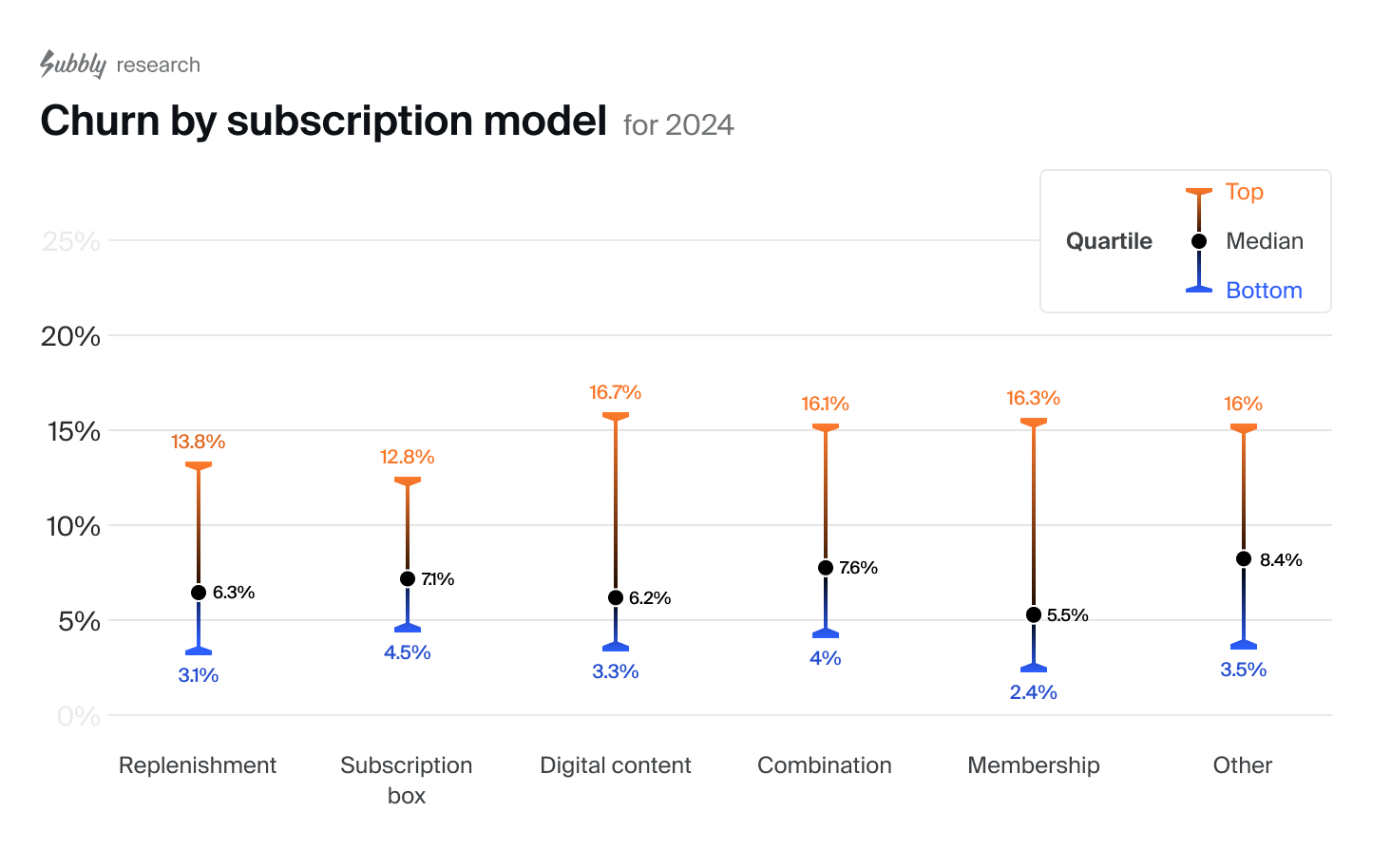
This is because consumable products sold via a direct-to-consumer replenishment model tend to be seen as critical customer purchases, fostering greater loyalty. Subscription boxes, on the other hand, are seen as discretionary.
Handling logistics, fulfillment, and customer support
As mentioned earlier, running a DTC subscription business means owning the entire customer experience, including shipping and support.
This takes up more of your time and may require additional resources. This is especially true when things go wrong, like delayed shipments or damaged products, as you don’t have a retailer to handle them.
You’ll also have to consider how you will scale these operations as your business grows.
Greater risk
Often, when a company sells through an intermediary, the partner company buys the stock and is responsible for selling it.
If the stock goes unsold, the retailer takes the immediate hit, not the producer. In a DTC subscription model, you simply don’t get revenue if customers don’t buy.
Next, we’ll examine why your subscription platform choice matters, and how it can make or break your business.
Choosing the Right Subscription Platform: Why Subscription-First Platforms Matter
Another challenge facing DTC subscription businesses is choosing the right platform.
Many entrepreneurs default to Shopify because it’s a well-known eCommerce platform. But here’s the problem: Shopify wasn’t built for subscriptions.
It’s designed for one-time sales, which means businesses have to rely on third-party plugins to add subscription functionality.
At first, this might not seem like a big deal. But as your business grows, these limitations will become clear.
You’ll probably run into issues like:
- Limited flexibility: Most plugins offer basic recurring billing, but they lack advanced features like custom billing cycles, bundling options, or churn-reduction tools.
- Poor integration: Subscription plugins don’t always sync properly with checkout, inventory, and customer management systems, leading to billing errors, failed renewals, and customer frustration.
- Scalability headaches: As your subscriber base grows, workarounds and plug-ins become harder to manage, forcing businesses to switch platforms later. This becomes a costly and time-consuming process.
Why a subscription-first platform makes all the difference
Platforms like Subbly solve the challenges listed above by offering everything in one place:
- Seamless billing: No need for third-party plugins. Manage recurring payments, free trials, upsells, and custom billing cycles all in one system.
- Customer management: Let customers pause, skip, or modify their subscriptions without needing to contact support.
- Built-in retention tools: Reduce churn with automated win-back campaigns, cancellation surveys, and personalized offers.
- Scalable and flexible: Whether you’re launching your first subscription or scaling an existing business, Subbly adapts to your needs.
Subbly’s platform also includes prebuilt subscription flows for DTC businesses, making it easy for you to quickly set up a website with all the features you need. These flows were created for imaginary businesses, so you can see how they would work in real life.
Check out this template for a meal delivery business:
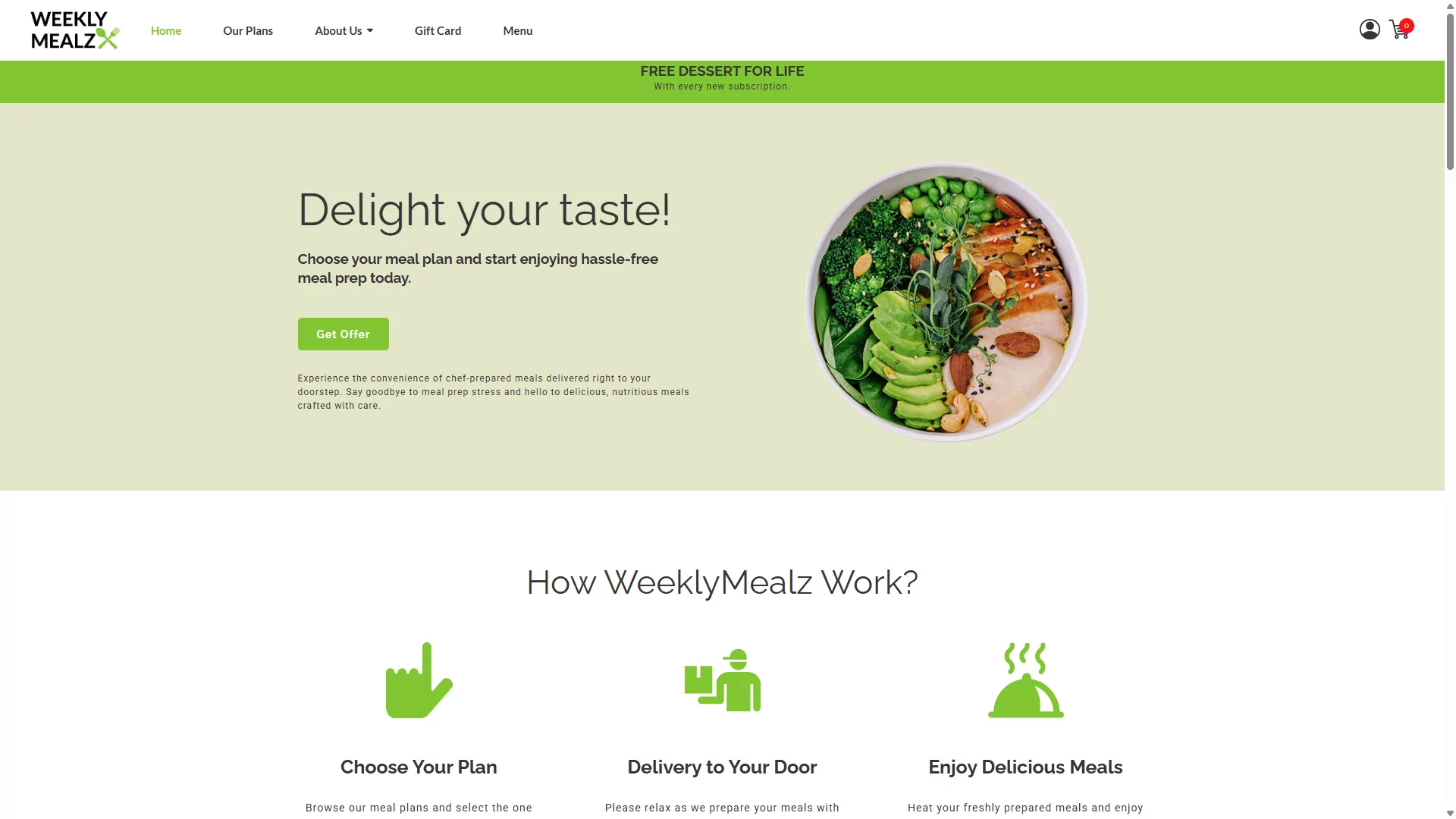
Or this demo website we made for VL1 supplements.

Choosing a subscription-first platform from the start saves time, money, and frustration down the line.
Make Transitioning to a DTC Subscription Model Easy With Subbly

DTC subscriptions offer businesses a way to build direct customer relationships, increase revenue predictability, and take full control over branding and sales.
While there are challenges, such as customer acquisition, fulfillment logistics, and churn, these can be addressed with the right strategies and tools.
A subscription-first platform like Subbly removes many of the roadblocks that come with traditional eCommerce setups by offering automated billing, customer management, and retention tools all in one place.
Instead of piecing together plugins and workarounds, businesses can focus on growing their subscriber base and delivering value to customers.
Want to see if Subbly is right for you? Sign up for a free trial today.

